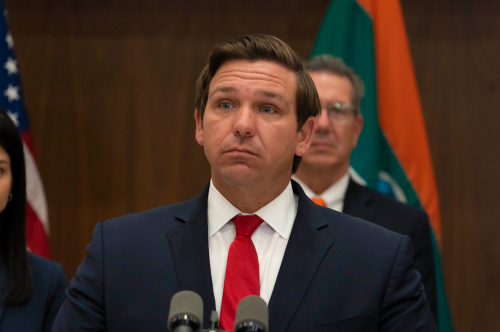
$30 BILLION Lost – Seniors Keep Falling
The government spends $30 billion yearly on falls for seniors, yet Stanford researchers have found simple ways to predict who’s at risk, making you wonder why we’re still playing catch-up with this preventable health crisis.
At a Glance
- Nearly one-third of Americans over 65 fall each year, making falls the leading cause of injury in seniors
- Fall-related healthcare costs total a staggering $30 billion annually in taxpayer money
- Stanford University researchers have developed methods to predict fall risk with 86% accuracy
- Simple assessments including gait speed and single-limb stance can identify those at highest risk
- Conventional prevention strategies focus on exercise, medication reviews, and home safety modifications
The Hidden Epidemic Costing Taxpayers Billions
Falls among our senior population have reached epidemic proportions, yet this crisis receives a fraction of the attention given to other health concerns. One-third of older adults experience at least one fall annually, creating a vicious cycle of fear, decreased activity, and even higher risk of future falls. These incidents aren’t just inconvenient stumbles – they’re the leading cause of injury in Americans over 65 and drain a jaw-dropping $30 billion from our healthcare system every year. That’s your tax dollars at work, folks – not building infrastructure or securing our borders, but picking up the pieces after preventable accidents.
Stanford’s Breakthrough Prediction Method
In a rare instance of government research funding actually producing useful results, Stanford University scientists have developed methods to predict who’s at risk for falls years before they happen. The study tracked healthy volunteers aged 24-31 using harnesses and cameras while walking on treadmills. Participants were subjected to conditions simulating aging effects – ankle braces limiting mobility, eye-blocking masks impairing vision, and destabilizing air jets. What they discovered was surprisingly simple yet effective: measurements of step width, timing differences, and foot placement consistency could predict falls with 86% accuracy.
“Small balance impairments can go unnoticed until someone actually falls. So, we wanted to ask: Can we detect these impairments before someone gets hurt?” – Jiaen Wu.
The researcher’s conclusion should be common sense to anyone who’s paid attention to an elderly relative’s walking patterns: “In this study, normal walking data was informative in most cases.” Yet it took a fancy university study published in the Journal of Experimental Biology to get healthcare professionals to take notice. This perfectly illustrates the disconnect between everyday Americans who use common sense and the academic elites who need peer-reviewed studies to validate what’s obvious to the rest of us.
Simple Assessments That Save Lives
While Stanford’s research is promising, healthcare professionals already have access to quick assessments that take less than five minutes to perform. Single-limb stance time (less than 6.5 seconds indicates fall risk) and gait speed (less than 1 meter per second shows increased risk) are two simple measurements that can identify seniors in danger. Additional questions about previous falls, medication use, and fear of falling can round out the assessment. But the real question is: why aren’t these evaluations standard practice at every doctor’s visit for seniors?
“These medical questions cover scenarios commonly seen in older adults who have experienced a fall. The likelihood of a fall increases with each question answered ‘yes.'” – Jordan Hoffman, PT, DPT.
Physical therapist Jordan Hoffman has seen the benefits firsthand: “In my practice, I have been implementing these questions and measures in evaluations in which a fall risk is present, and I have noticed that my evaluation time is much more productive and serves my patients better.” This is what responsible healthcare looks like – using simple, effective tools rather than expensive machines and endless bureaucracy to deliver results.
Common-Sense Prevention Strategies
The National Institute on Aging recommends six fall prevention tips that your grandmother could have told you without spending millions on research: exercise regularly, review medications, get vision exams, improve home safety, limit alcohol, and stand up carefully. What’s next – a government study confirming that water is wet? These are basic personal responsibility measures that families have implemented for generations. Yet our bloated healthcare system keeps treating falls as some mysterious phenomenon requiring endless study rather than practical solutions.
The factors contributing to fall risk are well documented: reduced balance responses, decreased sensory input, impaired muscle strength, depression, multiple medications, and environmental hazards. Most are addressable through basic lifestyle changes and home modifications that cost a fraction of treating injuries after they occur. But in our backwards healthcare system, prevention always takes a backseat to expensive treatments – because that’s where the profit lies for Big Pharma and the medical establishment.
Taking Responsibility for Our Elders
Here’s a revolutionary concept in today’s America: taking personal responsibility for our elderly loved ones. Instead of waiting for government programs and insurance to solve the problem, families should be the first line of defense against falls. Check your parents’ or grandparents’ homes for hazards. Encourage regular exercise focused on balance and strength. Review medications for side effects that might cause dizziness. These simple actions cost nothing but time and attention – commodities that seem in short supply in our distracted society.
While we need continued research into fall prevention, we don’t need to wait for perfect solutions before taking action. The information and tools already exist – they just need to be implemented consistently. But that would require our healthcare system to prioritize prevention over profits, and our society to value the wisdom and well-being of our elders. Those are cultural shifts that no government program can mandate, no matter how many billions we throw at the problem.




